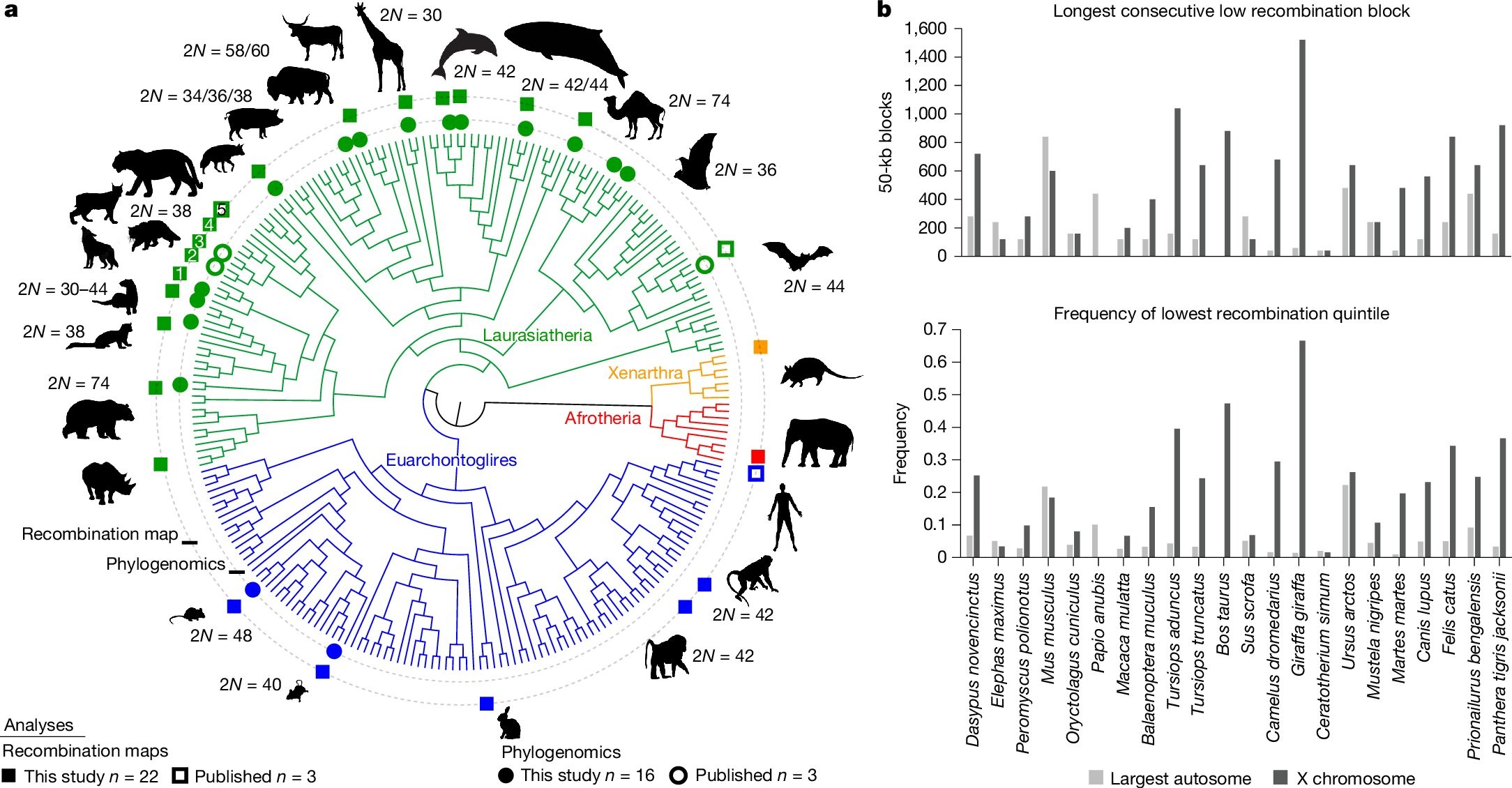Scientists have long known that even species like wolves, dogs, coyotes, big cats, and whales can interbreed. Yet, despite this mixing of genes, these animals remain distinct species. A new study published in Nature sheds light on this phenomenon by identifying a peculiar region within the X chromosome acting as a powerful “time capsule” preserving genetic differences between species.
Researchers from the Texas A&M College of Veterinary Medicine and Biomedical Sciences (VMBS) used advanced artificial intelligence to analyze genomes across 22 mammalian species. This revealed a vast area on the X chromosome, dubbed the X-linked recombination desert (XLRD), that has remained remarkably unchanged for over 100 million years. Spanning almost 30% of the X chromosome, this region acts as a barrier to gene exchange, helping maintain species boundaries even when interbreeding occurs.
“Before, we lacked detailed maps showing how genes shuffle during reproduction,” explains Dr. Nicole Foley, lead author of the study. This mixing of genetic material through recombination often complicates efforts to trace evolutionary relationships. AI-driven genome analysis now allows scientists to decipher this hidden blueprint of evolution.
The XLRD acts like a “time capsule,” preserving a snapshot of ancestral relationships that would otherwise be obscured by widespread gene swapping between species.
“Remarkably, the XLRD appears to be a recurrent and ancient feature in mammals,” Foley states. “It dips in the exact same place across different species’ X chromosomes. This indicates something functionally important is happening there.”
The discovery of this conserved region was particularly surprising because previous studies suggested that reproductive barriers arise independently and rapidly in different groups of species.
A Vital Role in Speciation
Beyond acting as a genetic time capsule, the XLRD appears to be crucial for speciation—the process by which new species evolve. This region is densely packed with genes related to reproduction in both sexes, including those involved in sex chromosome silencing. Dr. Bill Murphy, a senior researcher on the study, suggests that the unique genetic switches embedded within and around the XLRD may play a significant role in infertility observed in hybrid offspring and reproductive isolation in nature. These findings even hint at potential links between the XLRD and human reproductive disorders like polycystic ovarian syndrome.
This research opens up new avenues for understanding the complexities of reproduction, both in animals and humans. By unraveling the secrets held within this ancient genomic “time capsule,” scientists may gain valuable insights into reproductive dysfunction and ultimately contribute to solutions for infertility challenges.
